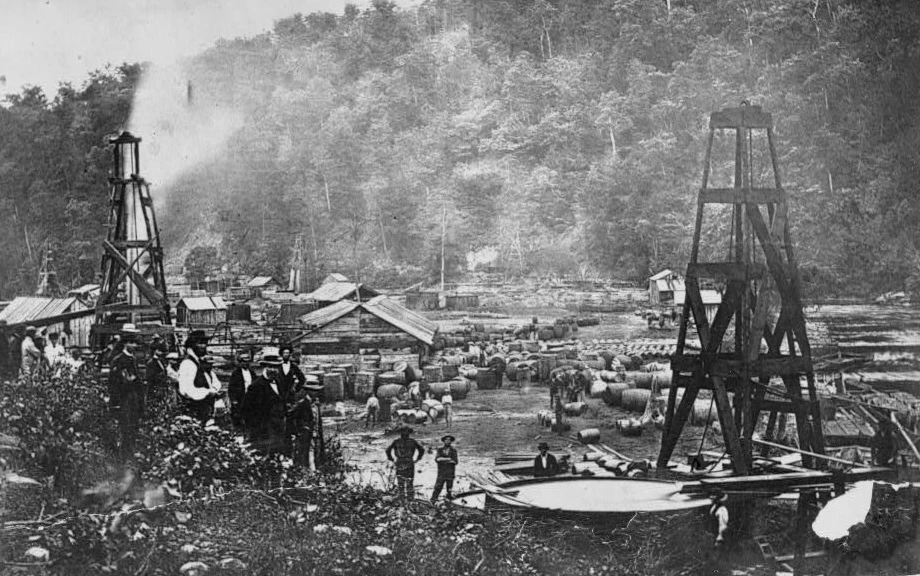“The Oil Excitement in Pennsylvania”
Weekly Republican (Plymouth, Ind.), December 15, 1859
From the Harrisburg Telegraph, Dec. 1
The oil fever is now raging in portions of Western Pennsylvania. An exchange published in that section says that in Crawford County and especially in the vicinity of Oil Creek, the fever is epidemic.
Everybody is more or less effected. The attention of the people is pretty generally directed to the reservoirs of wealth that have been discovered, or are supposed to exist in that region. Near Titusville, a great subterranean reservoir of oil has been tapped. In another place, ten miles distant, oil is being raised from a well, with a small hand pump, at the rate of fifteen gallons per hour. The indications of oil at that place are said to be very fine. It may be seen rising in many places from the bed of the river, “and by digging the shore three or four feet below the level of the river, the water in the excavation soon becomes covered with oil. Many of the wells dug for domestic use contain so much oil as to render the water unfit for use, and from some of the wells oil flows continually day and night.”

Numerous companies are being formed to bore for the oil, and lands supposed to cover the reservoirs are in great demand, so it is said. The discovery promises to revolutionize the oil business of the country. Professor Silliman has analyzed the article, and pronounces it one of the best materials in existence for illuminating purposes. It is also said by many to be an excellent lubricator. It has been tried with satisfactory results on buggy axles. When subjected to a high heat, it yields paraffin in large quantities, and from that material beautiful white candles are manufactured. It is, besides “unequalled as a liniment for man or beast.” It affords “great relief” in cases of asthma. Physicians pronounce it valuable as a remedy in scrofulous diseases. It relieves the nervous or sick headache. It cures consumption or minor diseases “too numerous to mention.” If all these things are so, great, indeed is the discovery, and tremendous will be the effect upon the oil market and they physical condition of the world.
Whales will no longer be valuable, except for their bones. The manufacture of lard oil will be suspended. The value of lard will consequently decline, pork packers, candlemakers, etc., will make a note of this. Then it will effectually rise up the coal oil business.

It is fortunate for the pork trade that these startling and important announcements have been made this early in the season. If they fail to be warned and prepare for the revolution that is approaching, they will have nobody to blame but themselves. The petroleum or rock oil of Pennsylvania, if we can believe the reports, will take possession of the markets. Ten cents per gallon will cover the expenses of the pumping, barreling, and transportation to New York, where for the present it is refined, and the article, ready for consumption, will be sold at very low figures compared with other oils.
It will illuminate, lubricate, make candles and cure most diseases from which humanity suffers. There will therefore be but little use hereafter for the whale, the hog and the grave digger. Let the world rejoice, and let all pork packers and doctors take warning.
